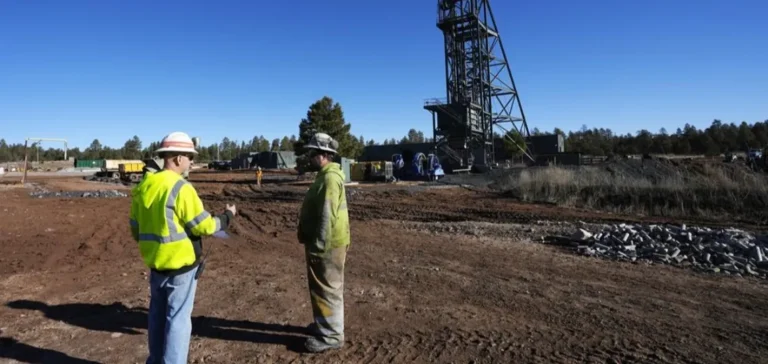The U.S. uranium production sector experienced unprecedented growth in 2024. National output of triuranium octoxide (U3O8), used in nuclear fuel fabrication, reached 677,000 pounds, compared to just 50,000 pounds in the previous year. This increase marks a significant milestone for the industry after years of stagnation and declining mining activity.
Intensified exploration and development
Exploration drilling amounted to 1,324 holes with a total depth of 613,000 feet, up from 877 holes in 2023, reflecting renewed interest in the search for new deposits. At the same time, development drilling reached 2,462 holes and 1,260,000 feet, more than double the activity from a year earlier. According to industry data, these levels of exploration and development had not been seen since 2013, both in terms of holes drilled and total footage.
Processing capacities and evolving facilities
By the end of 2024, two uranium mills, Shootaring Canyon Uranium Mill in Utah and Sweetwater Uranium Project in Wyoming, were on standby, with a combined capacity of 3,750 short tons per day. In Utah, the White Mesa Mill began a new phase of processing using alternative feed. In Wyoming, the Sheep Mountain site received partial permitting for its heap leach facility.
Operating in-situ recovery (ISR) facilities – Alta Mesa Project, Rosita Project, Lost Creek Project, Smith Ranch-Highland Operation, Ross Central Processing Project, and Willow Creek Project – had a combined annual capacity of 14.1 mn lbs U3O8, compared to 7.5 mn lbs in 2023. In parallel, four other ISR plants, totalling 7.8 mn lbs per year, were on standby. Seven additional ISR projects are planned across three states, for a total capacity of 11.4 mn lbs annually.
Employment and investment on the rise
The U.S. uranium production sector recorded 506 full-time equivalent jobs in 2024, a 49% increase in one year and the highest level of employment since 2016. Total expenditures for land acquisition, exploration, drilling, production, and reclamation reached USD160 mn ($160 mn), compared to USD107.4 mn ($107.4 mn) in 2023. This amount had not been observed for nine years, underlining renewed activity and the mobilisation of capital in this strategic sector.
The revival of production and development of industrial capacity has been accompanied by increased activity in labour and specialised services markets, as the U.S. sector positions itself to meet rising demand for nuclear fuel.






















